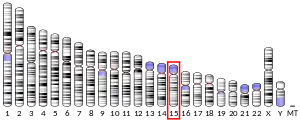| BAHD1 | |||||||||||||||||||||||||||||||||||||||||||||||||||
|---|---|---|---|---|---|---|---|---|---|---|---|---|---|---|---|---|---|---|---|---|---|---|---|---|---|---|---|---|---|---|---|---|---|---|---|---|---|---|---|---|---|---|---|---|---|---|---|---|---|---|---|
| Identifiers | |||||||||||||||||||||||||||||||||||||||||||||||||||
| Aliases | BAHD1, bromo adjacent homology domain containing 1 | ||||||||||||||||||||||||||||||||||||||||||||||||||
| External IDs | OMIM: 613880 MGI: 2139371 HomoloGene: 8976 GeneCards: BAHD1 | ||||||||||||||||||||||||||||||||||||||||||||||||||
| |||||||||||||||||||||||||||||||||||||||||||||||||||
| |||||||||||||||||||||||||||||||||||||||||||||||||||
| |||||||||||||||||||||||||||||||||||||||||||||||||||
| |||||||||||||||||||||||||||||||||||||||||||||||||||
| |||||||||||||||||||||||||||||||||||||||||||||||||||
| Wikidata | |||||||||||||||||||||||||||||||||||||||||||||||||||
| |||||||||||||||||||||||||||||||||||||||||||||||||||
Bromo adjacent homology domain containing 1 (BAHD1) is a protein that in humans is encoded by the BAHD1 gene. BAHD1 is involved in heterochromatin formation and transcriptional repression. [5]
Discovery
BAHD1 was first cloned from a human brain cDNA library and the coding sequence was named KIAA0945.[6] Bierne and colleagues further discovered the function of BAHD1 in the regulation of chromatin structure and gene expression.[7]
Function
BAHD1 acts as a co-repressor by interacting with a set of proteins that promote chromatin compaction and regulate transcription.[7][8] Tandem-affinity purification of the BAHD1-associated protein complex in human HEK293 cells identified MIER proteins (MIER1, MIER2, MIER3), histone deacetylase HDAC1 and HDAC2, histone H3K9 methyltransferase EHMT2, heterochromatin protein 1 (HP1 alpha, HP1 beta, HP1 gamma), MBD1, TRIM28 and CDYL as partners of BAHD1.[8] Overexpression of BAHD1 in HEK293 cells induces large-scale chromatin condensation [7] and DNA methylation on autosomes.[9] The C-terminal BAH domain of BAHD1 acts as a reader for the epigenetic mark H3K27me3.[10] Ectopically expressed BAHD1 colocalizes with the heterochromatic inactive X chromosome (Xi).[7][9]
Animal studies
Ablation of the Bahd1 gene in the mouse alters placental development and results in hypocholesterolemia, hypoglycemia and decreased body fat.[8] Bahd1-haplodeficiency in mice decreases the efficiency of infection with the bacterial pathogen Listeria monocytogenes.[11]
Clinical significance
During infection of human epithelial cells with the pathogen Listeria monocytogenes, BAHD1 represses interferon-stimulated genes.[11] At specific stages of infection, a Listeria nucleomodulin, LntA, acts as an inhibitor of BAHD1 and activates interferon-stimulated genes.[11][12] The BAHD1 gene is downregulated in the colon tissue in a mouse model of ulcerative colitis.[13]
References
- 1 2 3 GRCh38: Ensembl release 89: ENSG00000140320 - Ensembl, May 2017
- 1 2 3 GRCm38: Ensembl release 89: ENSMUSG00000040007 - Ensembl, May 2017
- ↑ "Human PubMed Reference:". National Center for Biotechnology Information, U.S. National Library of Medicine.
- ↑ "Mouse PubMed Reference:". National Center for Biotechnology Information, U.S. National Library of Medicine.
- ↑ "Entrez Gene: BAHD1". Retrieved 2016-10-22.
- ↑ Nagase T, Ishikawa K, Suyama M, Kikuno R, Hirosawa M, Miyajima N, Tanaka A, Kotani H, Nomura N, Ohara O (1999). "Prediction of the coding sequences of unidentified human genes. XIII. The complete sequences of 100 new cDNA clones from brain which code for large proteins in vitro". DNA Res. 26 (6): 63–70. doi:10.1093/dnares/6.1.63. PMID 10231032.
- 1 2 3 4 Bierne H, Tham TN, Batsche E, Dumay A, Leguillou M, Kernéis-Golsteyn S, Regnault B, Seeler JS, Muchardt C, Feunteun J, Cossart P (2009). "Human BAHD1 promotes heterochromatic gene silencing". Proc. Natl. Acad. Sci. U.S.A. 106 (33): 13826–31. Bibcode:2009PNAS..10613826B. doi:10.1073/pnas.0901259106. PMC 2728979. PMID 19666599.
- 1 2 3 Lakisic G, Lebreton A, Pourpre R, Wendling O, Libertini E, Radford EJ, Le Guillou M, Champy MF, Wattenhofer-Donzé M, Soubigou G, Ait-Si-Ali S, Feunteun J, Sorg T, Coppée JY, Ferguson-Smith AC, Cossart P, Bierne H (2016). "Role of the BAHD1 Chromatin-Repressive Complex in Placental Development and Regulation of Steroid Metabolism". PLOS Genet. 12 (3): e1005898. doi:10.1371/journal.pgen.1005898. PMC 4777444. PMID 26938916.
- 1 2 Libertini E, Lebreton A, Lakisic G, Dillies MA, Beck S, Coppée JY, Cossart P, Bierne H (2015). "Overexpression of the Heterochromatinization Factor BAHD1 in HEK293 Cells Differentially Reshapes the DNA Methylome on Autosomes and X Chromosome". Front Genet. Dec 1, 6:339 (eCollection 2015): e1005898. doi:10.3389/fgene.2015.00339. PMC 4664705. PMID 26648976.
- ↑ Zhao D, Zhang X, Guan H, Xiong X, Shi X, Deng H, Li H (2016). "The BAH domain of BAHD1 is a histone H3K27me3 reader". Protein Cell. 7 (3): 222–6. doi:10.1007/s13238-016-0243-z. PMC 4791424. PMID 26850261.
- 1 2 3 Lebreton A, Lakisic G, Job V, Fritsch L, Tham TN, Camejo A, Matteï PJ, Regnault B, Nahori MA, Cabanes D, Gautreau A, Ait-Si-Ali S, Dessen A, Cossart P, Bierne H (2011). "A bacterial protein targets the BAHD1 chromatin complex to stimulate type III interferon response" (PDF). Science. 331 (6022): 1319–21. Bibcode:2011Sci...331.1319L. doi:10.1126/science.1200120. PMID 21252314. S2CID 35405265.
- ↑ Lebreton A, Job V, Ragon M, Le Monnier A, Dessen A, Cossart P, Bierne H (2014). "Structural basis for the inhibition of the chromatin repressor BAHD1 by the bacterial nucleomodulin LntA". mBio. 21 (5(1):e00775-13): e00775-13. doi:10.1128/mBio.00775-13. PMC 3903274. PMID 24449750.
- ↑ Zhu H, Wan X, Li J, Han L, Bo X, Chen W, Lu C, Shen Z, Xu C, Chen L, Yu C, Xu G (2015). "Computational Prediction and Validation of BAHD1 as a Novel Molecule for Ulcerative Colitis". Sci Rep. Jul 17 (5:12227): 12227. Bibcode:2015NatSR...512227Z. doi:10.1038/srep12227. PMC 4505333. PMID 26183847.
Further reading
- Talmud PJ, Drenos F, Shah S, Shah T, Palmen J, Verzilli C, Gaunt TR, Pallas J, Lovering R, Li K, Casas JP, Sofat R, Kumari M, Rodriguez S, Johnson T, Newhouse SJ, Dominiczak A, Samani NJ, Caulfield M, Sever P, Stanton A, Shields DC, Padmanabhan S, Melander O, Hastie C, Delles C, Ebrahim S, Marmot MG, Smith GD, Lawlor DA, Munroe PB, Day IN, Kivimaki M, Whittaker J, Humphries SE, Hingorani AD (2009). "Gene-centric association signals for lipids and apolipoproteins identified via the HumanCVD BeadChip". Am. J. Hum. Genet. 85 (5): 628–42. doi:10.1016/j.ajhg.2009.10.014. PMC 2775832. PMID 19913121.
- Bailey SD, Xie C, Do R, Montpetit A, Diaz R, Mohan V, Keavney B, Yusuf S, Gerstein HC, Engert JC, Anand S (2010). "Variation at the NFATC2 locus increases the risk of thiazolidinedione-induced edema in the Diabetes REduction Assessment with ramipril and rosiglitazone Medication (DREAM) study". Diabetes Care. 33 (10): 2250–3. doi:10.2337/dc10-0452. PMC 2945168. PMID 20628086.



